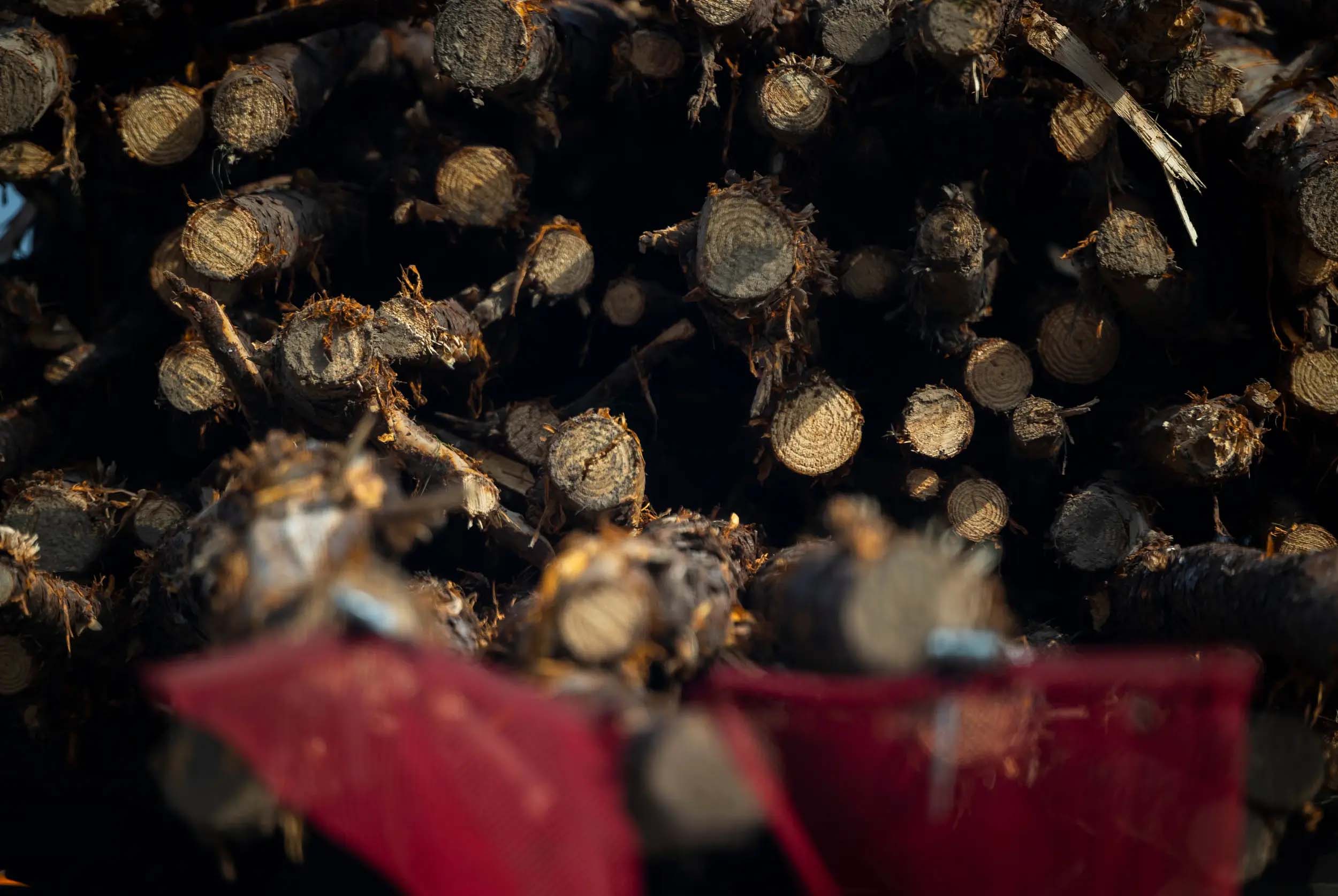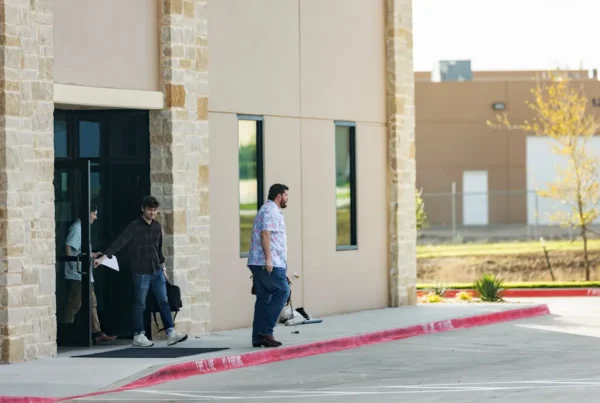From The Texas Tribune:
HUDSON — Three miles west of Lufkin, off of state Highway 94, sits a new 10,000 square foot building that appears starkly different from other offices — instead of steel or concrete, the structure is made entirely of wood.
The construction in Hudson, an East Texas town of about 5,000 residents, is one of a growing number of commercial projects in Texas using mass timber, a category of engineered wood products that uses glue or nails to bind layers of lumber together, making it strong and stable enough for commercial construction.
The recent growth in mass timber comes as East Texas foresters face a glut of wood and limited markets to sell it. East Texas is home to 12 million acres of timberland, which accounts for more than half of the region’s land, and most is privately owned. Demand and prices for lumber have swung wildly over the years, with a huge drop in prices during the 2008 housing crisis that East Texas foresters never fully recovered from. Although wood prices rebounded during the pandemic, an oversupply of trees has meant that growers are still paid less than they have been before.
Now, foresters are looking to mass timber as a possible new market. The concept originally developed in Europe during the 1990s and is now taking off in the U.S.
Globally, the number of mass timber construction projects is expected to reach more than 24,000 by 2034, according to the international mass timber report. Texas’ first mass timber project was completed in 2019 in San Antonio. Now, there are at least 134 mass timber projects in progress or completed, including in Sherman, Houston and Frisco. Projects range from university buildings to retail and office space.
The global mass timber market was valued at $857 million in 2021 and is expected to exceed $1.5 billion by 2031. If Texas can capture part of the growing mass timber market, East Texas’ regional economy could experience rapid growth. Texas grows about 30 to 40 percent more timber than is harvested each year, according to the Texas A&M Forest Service. Already, the forest sector contributes more than $41 billion to the state’s economy and supports about 170,000 jobs in the state, according to 2021 data.
“The fear is that if we don’t find new markets for the wood, forest landowners will change the use of their land,” said Rob Hughes executive director of the Texas Forestry Association.
And because wood stores carbon and is renewable, the material is inherently more environmentally sustainable than concrete or steel. A University of Washington study found that a cross laminated timber building would reduce global warming potential by 26.5 percent compared with a concrete building.
“In the face of new growth in Texas, if we are interested in achieving greater sustainability, we need to be looking to the forest for this new construction,” said Aaron Stottlemyer, forest analytics department head at the Texas A&M Forest Service.
Mass timber comes in different forms, and the most popular is cross-laminated timber, which consists of layers of dried boards that are glued together in alternating directions to form wooden panels. The product is more expensive than steel or concrete, but offers other advantages, foresters said. The material is prefabricated in a factory and then comes to the construction site ready to be installed. Less time and labor is needed to complete the construction, and because the product is lightweight, the cost and emissions associated with transport are reduced.
Hughes estimates that mass timber projects have about 30% lower construction costs than alternatives.
Unlike light-frame wood construction used to build homes, mass timber products are built to sustain more weight. The wood is glued or nailed together in layers that are stacked together for added strength, comparable to the durability of steel or concrete.
Timber also offers aesthetic benefits. Biophilic design, or construction that uses natural materials, have been shown to improve well-being.
“These are beautiful spaces, and people like to live, work and learn in spaces that use mass timber,” said Mark Bartlett, regional director of WoodWorks, a nonprofit that supports wood construction.
The International Building Code, which determines many cities’ building regulations in 2021 increased the permissible height of wooden buildings to 18 stories, opening the door to wooden high-rises. But foresters say they still face hurdles in widespread adoption of mass timber. Some architects are hesitant to try new building models, while others are unaware of the product’s benefits. Concerns about fire safety have also limited its adoption.
Bartlett emphasized that cross laminated timber panels produce a char layer that resists fire damage and ensures the structural integrity of a building during a fire.
To help expand adoption of mass timber, U.S. Sen. Ron Wyden, an Oregon Democrat, introduced bipartisan legislation that would establish a grant program to fund construction with wood products, including mass timber.
Locally, Texas officials said they are considering legislative efforts for the 2025 session.
Texas does not yet have a facility that manufactures cross-laminated timber, so developers have had to source the product from other states. East Texas foresters are eager to entice a manufacturing company to Texas.
“Texas is ripe for it,” said Chris deMilliano, operations manager at Steely Lumber, a family-owned saw mill in Huntsville. “Not only do we have a lot of timberland, but we have sawmills and one of the best growth markets.”
Disclosure: Texas Forestry Association has been a financial supporter of The Texas Tribune, a nonprofit, nonpartisan news organization that is funded in part by donations from members, foundations and corporate sponsors. Financial supporters play no role in the Tribune’s journalism. Find a complete list of them here.














